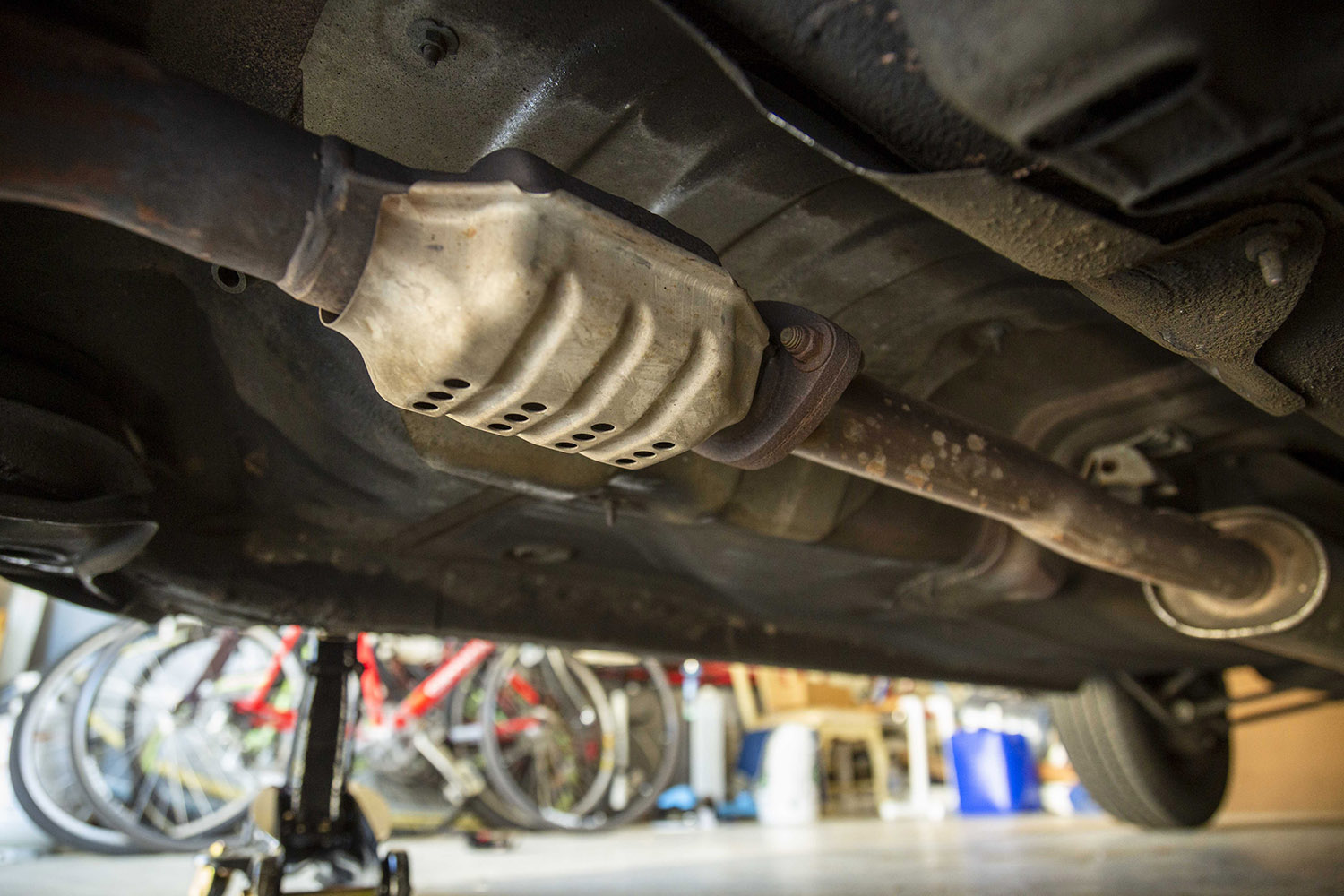Everything You Need to Know About Catalytic Converter Theft
Thieves are stealing this critical component from parked cars. Here’s why they do it, how they pull off the job, and what you can do to protect your vehicle.

A catalytic converter is one of the thousands of parts on your car you should rarely, if ever, need to think about. For most owners it will last the life of the vehicle and require no maintenance. But a rising wave of catalytic converter thefts has led thousands of drivers to learn what this exhaust-system component does and what happens when it goes missing in the night.
Maybe you’ve recently had your catalytic converter stolen. Maybe you’ve heard of thefts in your neighborhood. Whatever your motivation, we’ve compiled a comprehensive explanation of catalytic converters, the thefts driving this trend, and what you can do to reduce your chances of becoming a victim.
What Is a Catalytic Converter?
The catalytic converter
Where Is the Catalytic Converter?
Follow the exhaust system from the engine toward the rear of the vehicle, and you’ll come across a device shaped like an oversized thermos. That’s the catalytic converter. If you hit a muffler or tailpipe, you’ve gone too far.
Why Do Thieves Steal Catalytic Converters?
The lure of the catalytic converter lies in the honeycomb filling that cleans the exhaust. It’s coated with precious metals like platinum, rhodium, and palladium, which act as catalysts in the chemical reaction that makes harmful pollutants less so. While a cat contains only trace amounts of these materials, they’re valuable enough to incentivize crooks.
The price of rhodium, for example, rose to more than $950 per gram in March, 2021. It has since come down to about $380, but a scalper might pay anywhere from $50 to $250 for a catalytic converter. Once they have a substantial haul—say about 500 cats—the scalper unloads the lot onto a smelter, who extracts and sells the metals. They may even make their way into new catalytic converters, and the process repeats.
How Are Catalytic Converters Stolen?
Often in teams. One person keeps a lookout and a getaway car running while another lifts the car with a jack, slides underneath, and removes the cat with a saw or pipe cutter. They’re done and gone within minutes.
Do Thieves Target Certain Vehicles?
The Toyota Prius is a popular choice. According to the
How Big of a Problem Is Catalytic Converter Theft?
A March, 2021 report from the National Insurance Crime Bureau (NICB) found that, on average, 108 catalytic converter thefts occurred each month in 2018. In 2020, the incident rate leaped to an average of 1,203 per month. The pandemic definitely played a part in the rise. The NICB cited closed outreach centers, public safety resource limitations, and unemployment as factors behind the upswell. To combat the problem, some states have drafted bills to ban the sale of catalytic converters without proof of ownership.
How Do I Know If My Catalytic Converter Is Missing?
You’ll know the moment the engine comes to life. Your unmuffled car will roar as though it belongs on the starting grid of a stock-car race.
Can I Drive My Car Without a Catalytic Converter?
You’ll have no problem steering your wounded car to a muffler shop for repairs. But long term? That’s not a great idea. It’s illegal to remove a functioning catalytic converter, as your car will pollute more, thus harming the environment. And such a breach in the exhaust line would dump unfiltered, toxic gases right under the passenger compartment, and possibly make their way into the car.
How Much Does a Replacement Catalytic Converter Cost?
A new one might set you back a few thousand dollars, but in the event of a theft, your insurance should cover that. An aftermarket catalytic converter could cost as much as 80% less than an OEM part, but we wouldn’t recommend it, and your state may not allow it.
Are There Ways to Deter Thieves from Taking My Catalytic Converter?
The best way to prevent theft of your catalytic converter is to park your vehicle in a secure garage. If that’s not an option, you can make the catalytic converter harder for thieves to steal by having someone (a) weld stainless-steel cables around the catalytic converter to the car’s frame, (b) cover it with a cage made of rebar or other high-strength metal, or (c) install a steel shield over the cat and surrounding exhaust pipe that requires extra time and tools to remove. Those options could cost anywhere from $250 to $800. You can also have your VIN engraved onto your cat to make it easy to identify if removed.
Written by humans.
Edited by humans.
 Andrew Lawrence
Andrew LawrenceAndrew Lawrence learned to read from car magazines, learned to write drafting complaint letters to Audi execs, and learned to drive in a 1988 Volvo 760 Turbo wagon—and has been chasing that blissful rear-wheel drive high ever since. His main career goal is to write enough to afford owning (and repairing) a Volkswagen Phaeton.
Related articles
View more related articles